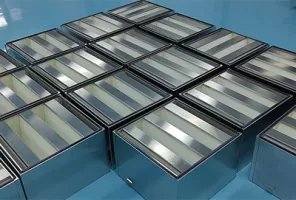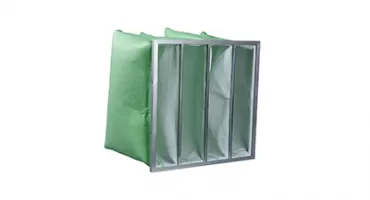 August 22, 2023
August 22, 2023
As environmental pollution continues to escalate, air quality has become a focal point of concern. The application of air filters has become increasingly common in areas such as construction, automobiles, and household appliances. Among these, the pre-filter, which plays a crucial role within air filtration systems, holds particular significance for beginners in its understanding of initial pressure drop. This article aims to dissect the accurate interpretation of initial pressure drop for pre-filters, offering insights from both theoretical and practical perspectives, along with practical recommendations.
I. The Role and Characteristics of Pre-Filters
A pre-filter is a filtration material positioned at the front end of an air filter, primarily used to capture larger particles and dust in the air. Its main function is to prevent pollutants from entering downstream systems and to safeguard the proper functioning of subsequent filters. Pre-filters are often made from synthetic fiber or glass fiber materials, offering high capture efficiency and low resistance.
II. The Meaning of Initial Pressure Drop for Pre-Filters
The initial pressure drop of a pre-filter refers to the pressure difference across the filter during the initial air circulation after installation. In the normal usage of a pre-filter, accumulation of particles gradually leads to filter clogging, resulting in an increase in pressure drop. Hence, the initial pressure drop of a pre-filter is a significant indicator for determining filter lifespan and replacement intervals.
III. The Correct Interpretation of Initial Pressure Drop for Pre-Filters
1. Theoretical Analysis:
The initial pressure drop of a pre-filter is influenced by factors such as filter type, size, material, and usage environment. Generally, the initial pressure drop of a pre-filter should be maintained within a reasonable range to ensure effective filtration while minimizing energy consumption. Therefore, when selecting and installing pre-filters, it is important to establish appropriate standards for initial pressure drop based on actual conditions.
2. Practical Experience:
To correctly interpret the initial pressure drop of pre-filters, beginners are advised to consider the following points:
- Regularly inspect and record the initial pressure drop to monitor filter performance.
- Replace pre-filters promptly based on pressure drop changes to prevent filter clogging and disruptions to normal operation.
- When cleaning filters, follow the manufacturer's guidelines to avoid damaging the filter.
- When selecting pre-filters, choose the appropriate model and specifications based on specific air quality requirements and usage environment.
Pre-filters are a critical component of air filtration systems and play a vital role in maintaining air quality. A correct understanding of the meaning and approach to initial pressure drop for pre-filters is essential for beginners. By appropriately selecting, installing, and maintaining pre-filters, we can better safeguard indoor air quality and create a healthier living environment.
For beginners, mastering the correct interpretation of initial pressure drop for pre-filters is crucial. Only by accurately grasping their role and characteristics, and by establishing and maintaining the initial pressure drop appropriately, can we effectively ensure air quality and provide a favorable indoor environment. It is hoped that this article's analysis and recommendations will aid beginners in better understanding and applying pre-filters.
 Mar. 19, 2024
Enhancing Mushroom Farming with HEPA Filter Equipped Laminar Flow Hoods
Mar. 19, 2024
Enhancing Mushroom Farming with HEPA Filter Equipped Laminar Flow Hoods
 May. 16, 2025
Box-Type Air Filters for Gas Turbines: A Complete Guide
May. 16, 2025
Box-Type Air Filters for Gas Turbines: A Complete Guide
 Jul. 31, 2023
Ultimate Guide to Air Filtration for Paint Booths
Jul. 31, 2023
Ultimate Guide to Air Filtration for Paint Booths

